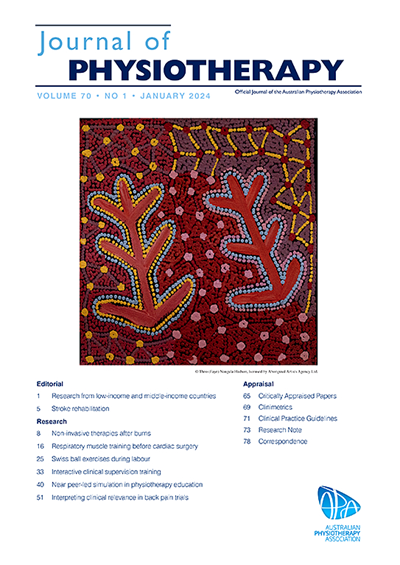Non-specific diagnostic labels for musculoskeletal conditions foster positive views about prognosis and non-invasive management but require clear explanation: a systematic review
IF 9.4
1区 医学
Q1 ORTHOPEDICS
引用次数: 0
Abstract
Questions
What are patient and public perceptions of diagnostic labels for musculoskeletal pain? How do these labels influence beliefs, emotions and treatment preferences?
Design
Systematic review and qualitative meta-synthesis.
Participants
People with musculoskeletal pain or people presented with hypothetical vignettes of musculoskeletal pain.
Intervention
Diagnostic labels for musculoskeletal pain.
Outcome measures
Patient/public perceptions of diagnostic labels for musculoskeletal pain and the influence of these labels on beliefs, emotions and treatment preferences.
Results
Four major themes emerged. First, patients strongly valued diagnoses to validate their pain and guide treatment. Second, poor diagnostic explanations and use of medical jargon led to patient frustration and confusion. Third, specific diagnostic labels were validating but promoted fear and a biomedical view of pain, whereas non-specific labels were associated with less fear but higher confusion. Fourth, non-specific labels led to more positive views towards prognosis and non-invasive management but led some patients to believe that further investigations were needed.
Conclusion
Patients have a strong desire for a diagnosis and may prefer specific diagnostic labels, but these can lead to patient harm. Non-specific labels, while less threatening, require clear explanations to avoid confusion.
Registration
CRD42024592437.
肌肉骨骼疾病的非特异性诊断标签促进了对预后和非侵入性治疗的积极看法,但需要明确的解释:系统回顾。
问题:患者和公众对肌肉骨骼疼痛诊断标签的看法是什么?这些标签是如何影响信念、情绪和治疗偏好的?设计:系统回顾和定性综合。参与者:患有肌肉骨骼疼痛的人或假想的肌肉骨骼疼痛的人。干预:肌肉骨骼疼痛的诊断标签。结果测量:患者/公众对肌肉骨骼疼痛诊断标签的认知,以及这些标签对信念、情绪和治疗偏好的影响。结果:出现了四个主要主题。首先,患者非常重视诊断,以验证他们的疼痛并指导治疗。其次,糟糕的诊断解释和医学术语的使用导致患者沮丧和困惑。第三,特定的诊断标签是有效的,但促进了恐惧和对疼痛的生物医学观点,而非特定标签与较少的恐惧有关,但更高的困惑。第四,非特异性标签导致对预后和无创治疗的更积极的看法,但使一些患者认为需要进一步的调查。结论:患者有强烈的诊断欲望,可能更喜欢特定的诊断标签,但这可能导致患者伤害。非特异性标签虽然威胁性较小,但需要明确的解释以避免混淆。注册:CRD42024592437。
本文章由计算机程序翻译,如有差异,请以英文原文为准。
求助全文
约1分钟内获得全文
求助全文
来源期刊

Journal of Physiotherapy
ORTHOPEDICS-REHABILITATION
CiteScore
11.40
自引率
7.40%
发文量
69
审稿时长
72 days
期刊介绍:
The Journal of Physiotherapy is the official journal of the Australian Physiotherapy Association. It aims to publish high-quality research with a significant impact on global physiotherapy practice. The journal's vision is to lead the field in supporting clinicians to access, understand, and implement research evidence that will enhance person-centred care. In January 2008, the Journal of Physiotherapy became the first physiotherapy journal to adhere to the ICMJE requirement of registering randomized trials with a recognized Trial Registry. The journal prioritizes systematic reviews, clinical trials, economic analyses, experimental studies, qualitative studies, epidemiological studies, and observational studies. In January 2014, it also became the first core physiotherapy/physical therapy journal to provide free access to editorials and peer-reviewed original research. The Australian Physiotherapy Association extended their support for excellence in physiotherapy practice by sponsoring open access publication of all Journal of Physiotherapy content in 2016. As a result, all past, present, and future journal articles are freely accessible, and there are no author fees for publication.
 求助内容:
求助内容: 应助结果提醒方式:
应助结果提醒方式:


